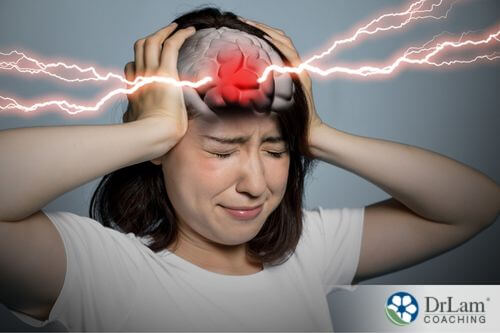 A traumatic brain injury (TBI) may not show symptoms right away, but it can have a wide range of health effects. Many people fully recover from a TBI, but it can increase the chances of cognitive decline later in life.
A traumatic brain injury (TBI) may not show symptoms right away, but it can have a wide range of health effects. Many people fully recover from a TBI, but it can increase the chances of cognitive decline later in life.
According to the Centers for Disease Control and Prevention (CDC), a traumatic brain injury refers to "…a disruption in the normal function of the brain that can be caused by a bump, blow, or jolt to the head, or penetrating head injury." This damage to the brain may result from a car or motorcycle accident, a fall, or a blow to the head, for example. However, the symptoms and the severity depend on many factors, including where the damage occurs to the brain, and also the extent of the damage experienced.
There are two main classifications for this type of injury. In an open traumatic brain injury, there is damage to the skull. In a closed traumatic brain injury, the skull would not necessarily suffer damage although the brain might be damaged due to the force of impact. Both these types of injuries could have serious consequences.
A penetrating injury would cause a skull fracture. A linear or depressed closed injury could also cause a skull fracture. Any skull fracture, however, implies the injury arose due to the application of significant force.
The most common traumatic brain injuries include:
A concussion typically results from a hard impact to the head. Although you may lose consciousness, most times you do not. The latter is fairly common. Do note, however, that if left unattended, a concussion may have serious consequences.
A contusion may result from a blow to the brain. Here you may find localized bleeding that could result in the formation of a blood clot.
A penetrating injury may result from a sharp object penetrating the skull and entering the brain.
A diffuse axonal injury in the brain results from a hard impact to the head causing a break in the skull.
A hematoma occurs due to the collection of blood either in or around the brain. It may result from either open or closed injuries. The different hematomas include:
Different skull fractures each have their own type of risk involved. For example:
 All traumatic brain injury types have similar symptoms, although their severity and number of associated symptoms may differ depending on the type of injury. For example, someone with a mild concussion may have milder and fewer symptoms than someone with a cracked skull.
All traumatic brain injury types have similar symptoms, although their severity and number of associated symptoms may differ depending on the type of injury. For example, someone with a mild concussion may have milder and fewer symptoms than someone with a cracked skull.
Many symptoms appear within twenty-four hours of the injury. Others may only manifest a few days or even weeks afterward. You may not even realize that certain symptoms point toward a traumatic brain injury, with many people presenting no symptoms at all. However, some people in this position can find their condition worsening within a few days.
The effects of a traumatic brain injury could have both a physiological and psychological impact.
The first issues arising from a traumatic brain injury - bruising and swelling - may in time put pressure on the brain. This can cause brain tissue damage, constriction of blood vessels, and a reduced ability to supply the brain with oxygen and nutrients.
Bruising around the eyes or ears may indicate internal bleeding. Other symptoms associated with traumatic brain injury include the following:
If you have had a traumatic brain injury and show no immediate symptoms, do know that you should be closely monitored for at least 24 hours. If you experience these symptoms, even if it is a few days after the injury, please see a healthcare provider immediately.
Although infants and young children may experience the same symptoms, they may not be able to let you know how they feel. So, if a young child or infant experiences this type of injury, please look out for the following symptoms:
If you see any of these signs, even a few days after the injury, please consult a healthcare professional as soon as possible.
A traumatic brain injury can have serious effects on how the body responds to stress through the Neuroaffect Circuit. This circuit is made up of the brain, autonomic nervous system, and microbiome. It forms an important part of the NeuroEndoMetabolic (NEM) stress response, which is responsible for the body’s reactions to stress. This system is governed by the Hypothalamic-Pituitary-Adrenal axis, which starts in the brain.
The three parts of the Neuroaffect Circuit make use of chemical messengers called neurotransmitters to communicate. A problem in one area can affect the others.
Even in healthy people, chronic stress may impede the brain’s ability to function as it should. Although we tend to think of stress as something we experience due to demanding work conditions, as an example, it also refers to stress put on the body as a result of an illness or injury. A traumatic brain injury can be a major stressor.
This stress could impact not only brain function, but could cause an imbalance in hormones, the microbiome, and other body systems as well. It could lead to a constant demand for elevated cortisol levels so that your body can deal with the repercussions of this stress, resulting in adrenal fatigue. Adrenal fatigue is the result of constant, elevated cortisol production from the adrenal glands. When your adrenals can no longer keep up with this demand, additional health problems and seemingly unrelated symptoms may result.
 A traumatic brain injury is not only an injury to the brain. It is an injury that could potentially affect many body organs and systems. But as the main focus of this article is the brain, we will take a look at how the symptoms primarily associated with the brain might last.
A traumatic brain injury is not only an injury to the brain. It is an injury that could potentially affect many body organs and systems. But as the main focus of this article is the brain, we will take a look at how the symptoms primarily associated with the brain might last.
The severity of a brain injury is measured according to the Glasgow Coma Score (GCS). The higher the score, the lower the mortality risk. In the United States, the mortality rate of adults who suffered a severe traumatic brain injury is as high as a third. Interestingly, children under five have a lower mortality rate resulting from this type of brain injury than adults.
Most people who have undergone a mild traumatic brain injury have a good recovery rate and retain excellent neurological function. Those with moderate or severe injuries may not recover as well, although their prognosis is better than you may believe. According to the GCS, someone with this type of injury has one of five possible outcomes:
Over half of the adults who suffered a severe traumatic brain injury either fully recover or have only a moderate disability.
If someone is suffering from a coma due to this type of injury, and it persists for more than twenty-four hours, the chances of neurological function recovery begin to decline. However, some people wake up and fully recover.
The most rapid recovery of neurological functions occurs within the first six months and declines after this. The ensuing years may only see small, sporadic improvements.
Literature suggests a traumatic brain injury may have long-term health complications. This is often seen in certain sports where frequent head injuries occur, such as boxing. While recovery may initially be swift, many boxers develop dementia and other conditions in their later years due to frequent traumatic brain injuries during their youth. Even one brain injury may cause neurological or neurodegenerative disorders as time goes by.
While not all people who have a traumatic brain injury may have long-term health complications or suffer from neurological or neurogenerative disorders afterward, this is a possibility in later life.
The duration of initial symptoms after an injury varies. A mild concussion, for example, may last a few hours to a few days. For more serious injuries, symptoms may last a few days to a few months.
While nothing may be able to heal the damage of a severe TBI, following certain guidelines of a healthy lifestyle may help protect your long-term cognitive function. If you have had a traumatic brain injury, be sure to talk to your doctor before trying any new protocols or pushing your body.
A healthy diet may help slow or protect against long-term cognitive decline associated with traumatic brain injury. The following foods support brain health while reducing your risk of heart or vascular disease.
Leafy green vegetables like broccoli, spinach, and kale are a reliable source of nutrients the brain needs to stay healthy. They contain folate, beta carotene, vitamin K, lutein, and others.
Berries are full of flavonoids. These natural plant pigments may help improve memory function. Literature suggests that eating berries regularly may delay the rate of memory decline by over two years.
 Nuts are a good source of healthy fats and proteins. Research conducted at UCLA in 2015 suggests that higher walnut consumption may help improve cognitive ability. These nuts have high alpha-linolenic acid (ALA) concentrations. This type of omega-3 fatty acid may also improve blood pressure levels and improve arterial health.
Nuts are a good source of healthy fats and proteins. Research conducted at UCLA in 2015 suggests that higher walnut consumption may help improve cognitive ability. These nuts have high alpha-linolenic acid (ALA) concentrations. This type of omega-3 fatty acid may also improve blood pressure levels and improve arterial health.
Fatty fish like salmon, tuna, cod, or sardines are high in omega-3 fatty acids. These fatty acids may lower your beta-amyloid blood levels. People suffering from Alzheimer’s disease tend to have higher concentrations of this protein in their blood. EPA omega-3 may also help reduce inflammation in the brain.
Many people rely on caffeine in the morning to jump-start their brains. And literature suggests that those who consume caffeine throughout the day score higher on tests measuring mental function. Do remember, however, that large amounts of this stimulant may not be good for those suffering from adrenal fatigue or other health issues. Taken in higher concentrations, it may contribute to an adrenal crash.
If suffering from the repercussions of a traumatic brain injury, you may need to follow a specific rehabilitation plan that includes physical therapy, speech therapy, occupational therapy, and psychological support. But you can also, if able, make use of physical and mental exercises.
Physical exercise may stimulate endorphin release in your brain. While endorphins are feel-good hormones, they also enhance your cognitive function. Another benefit is that they may stimulate the growth of new brain cells.
Physical exercise that may improve cognitive function includes the following:
Mental exercises that improve cognitive function and memory include the following:
Reducing stress levels and being social are also good for your brain. You might consider making time for your friends, getting a pet, or taking up a new hobby. These also stimulate the brain.
Many natural supplements can be used to boost cognitive ability. They may also boost memory and help reduce the risk of brain function decline due to the aging process.
While a traumatic brain injury could have devastating consequences, the majority of people recover. However, keep on the lookout for symptoms developing as you age as they could point towards a decline in cognitive ability.
If you would like to know more about natural ways to support your health with a traumatic brain injury, the team at Dr. Lam Coaching can help. We offer a free** no-obligation phone consultation at +1 (626) 571-1234 where we will privately discuss your symptoms and options. You can also send us a question through our Ask The Doctor system by clicking here.
A traumatic brain injury may have devastating consequences. But depending on your age and type of injury, you may see a full recovery. It is best to talk to your healthcare professional about the prognosis.
